-
About
- About Listly
- Community & Support
- Howto
- Chrome Extension
- Bookmarklet
- WordPress Plugin
- Listly Premium
- Privacy
- Terms
- DMCA Copyright
- © 2010-2025 Boomy Labs
 Hugo Rep
Hugo Rep
Listly by Hugo Rep
Per me l'Argentina è aria fresca, un paese che ha così tanto da offrire che un solo viaggio qui non basta. Tutti si ostinano a visitarla da ottobre a marzo (durante la primavera e l'estate australe) ma anche durante gli altri mesi è sensazionale!
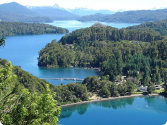
Buenos Aires is a great city, but Argentina is a great country, and it would be a shame if you lived here and didn't see all that it has to offer. And so without further ado, here are 8 places in Argentina you absolutely must visit.
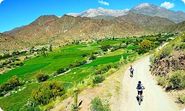
Abra del Acay è un passo andino che viene considerato il più alto, o uno dei più alti, passaggi stradali dell'America e si trova nel dipartimento "La Poma", nella provincia "Salta", in Argentina, circa a 30 km a sudest da San Antonio de los Cobres.

Photos, virtual tours and pictures of Argentina include Iguazu Falls, Mesopotamia, Buenos Aires, Patagonia, the Andean Northwest and the Lake District, Tierra del Fuego and more.

The Criollo Park and Museum, offers expressions of Argentine past that are linked to the gaucho, customs, practices, equipment, livelihoods and contribute to the greatness of the country. Putting the institution under the illustrious name of Don Georges Braque, he relates primarily everything related to the personality and literary work of the writer, circumstances Giiiraldes is in his "Don Segundo Sombra".

Each place has its own charm and attraction that mixes with the flavors and aromas of different foods of their culture. Thus, typical meals are prepared with Northwest Argentina recipes passed from generation to generation, times in which every region had only locally produced foods, and those who could go to the bartering with residents of other nearby areas with different climates in order to get supply to complement their diet.
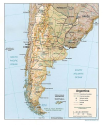
Argentina, officially the Argentine Republic (Spanish: República Argentina), is the second largest country in South America, constituted as a federation of 23 provinces and an autonomous city, Buenos Aires. It is the eighth-largest country in the world by land area and the largest among Spanish-speaking nations, though Mexico, Colombia and Spain are more populous.
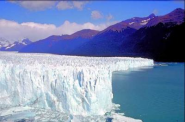
The Andes mountain range shows its beauty in the Patagonian provinces. Millennial silent forests with native vegetable species are extended along the shores of glistening waters.

Argentina is composed of twenty-three provinces and one autonomous city, Buenos Aires. The administrative divisions of the Provinces are the departments, and the municipalities, except for Buenos Aires Province, which is divided into partidos.
The City of Buenos Aires is divided into communes. The provinces are organized as a federation, each one with a local constitution.
The history of science in Argentina describes the fate of researchers and scientific institutions of the country, often exposed to the elements of its economy and its politics, but able, nevertheless, to produce enduring works and useful to know and technology.
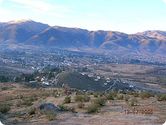
Tafi del Valle is the most important touristic centre of Tucumán Province. It is a village sorrounded by mountains, in the mid- west of Tucumán, 107 km away from the capital city.

Photos, virtual tours and pictures of Argentina include Iguazu Falls, Mesopotamia, Buenos Aires, Patagonia, the Andean Northwest and the Lake District, Tierra del Fuego and more.
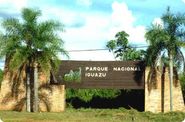
The Iguazu Falls are waterfalls generated by the Iguazu River located on the border of the Brazilian state of Paraná and the Argentine province of Misiones. The system consists of cascades of 300 waterfalls, with heights up to 70 meters, along 2.7 miles of the Iguazu River.
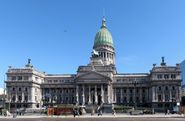
Buenos Aires is the capital of Argentina and its largest city and port. After the internal conflicts of the 19th century, Buenos Aires was federalised and removed from Buenos Aires Province in 1880; its city limits were enlarged to include the former towns of Belgrano and Flores; both are now Argentines sometimes refer to the city as Capital Federal to differentiate the city from the province of the same name.

Córdoba is a city located near the geographical center of Argentina, in the foothills of the Sierras Chicas mountains on the Suquía River, about 700 km west-northwest from Buenos Aires. It is the capital of Córdoba Province. It is the second industrial center of Argentina, but retains many of its historical buildings dating from the colonial era.
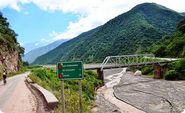
Weds 14 Nov: San Antonio de los Cobres - La Poma (c. 2830m) (92km, 1350m ascent). The big day. We set off early, retracing to Los Patos and turning right. The route follows a stream through a broad valley, with a few settlements off the road.
The Larches The National Park, located in the mountainous region of the province of Chubut, has 14 lakes connected by rivers and hiking trails 28. Owner of an ancient alerzal unique in the world, invites the traveler to enjoy unspoiled nature and discover the magic of glaciers, lakes and forests.
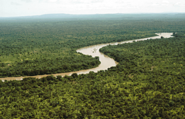
Biodiversity is the degree of variation of life forms within a given species, ecosystem, biome, or planet. Terrestrial biodiversity tends to be highest at low latitudes near the equator,which seems to be the result of the warm climate and high primary productivity. Marine biodiversity tends to be highest along coasts in the Western Pacific, where sea surface temperature is highest and in mid-latitudinal band in all oceans. Biodiversity generally tends to cluster in hotspots, and has been increasing through time but will be likely to slow in the future.
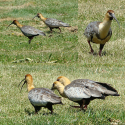
At present the existing biodiversity in the Patagonia Argentina, we are referring not only to the particular characteristics of each of the species that inhabit this region, wildlife humble glance, but try to give a global picture of the immense wealth totalizing underlying this ground, across the spectrum.
In other words, we want to make come to understand that since the immeasurable beauty of the ocean, through the rigorous but captivating arid steppe, to the stunning charm of the Cordillera de Los Andes, from the solitude of the hills in the plains to the majesty of the lakes with its glaciers, Patagonia Argentina hosts, even in its apparent simplicity, "THE MIRACLE OF LIFE."

Birds of Argentina of stable or accidental presence in danger: the Black Remolinera. | Argentina Photo Gallery

For all its diversity, the elusive spirit of Argentina as a country is present everywhere in Buenos Aires. The national dance, the tango, is perhaps the best expression of that spirit - practiced in dance halls, parks, open plazas, and ballrooms, it is a dance of intimate separation and common rhythm, combining both an elegant reserve and an exuberant passion.

Camino de Los Nogales, l'itinerario per arrivare alla cascata di Nahuelpan.
Percorso di 10 km lungo la strada precedentemente utilizzata come accesso alla città. Attraversa un'area di fattorie.
Alcuni ti invitano a goderti le attività di agriturismo.
Frutti pregiati, ortaggi biologici, piantagioni di luppolo, latticini, trote, tra gli altri, fanno parte della produzione della zona.
Puoi ammirare, assaggiare e acquistare questi prodotti regionali.
Castillo Naveira en Luján increíble belleza arquitectónica con estructura basada en el arte gótico. Uno de los lugares más misteriosos y excéntricos de Argentina ya que se encuentra vedado al público.
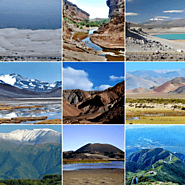
Catamarca invita a transitare e scoprire antichi sentieri che aprono un'incredibile esperienza per i sensi. Questa terra di contrasti trova il suo naturale equilibrio tra la brusca fine delle Ande e il verde intenso delle valli.
El Cerro Ásperoestá ubicado en las sierras Pampeanas entre las provincias de Córdoba y San Luis, donde se puede visitar un pueblo escondido y abandonado donde se asentaron los trabajadores de la mina de la zona donde se extraía wolframio, desde 1895 hasta 1969.

Cerro Piltriquitrón energia magnetica, foreste e viste spettacolari racchiudono un fascino enigmatico. Il Piltri è sempre il punto di riferimento.
Il Piltriquitrón è, per qualcuno, un centro di energia magnetica, altri godono solo delle sue foreste e delle viste spettacolari senza cercare molte spiegazioni.
La verità è che i “Piltri”, come lo chiamano, racchiudono un fascino enigmatico.
A El Bolsón, ovunque tu decida di andare, il Piltriquitrón è sempre il punto di riferimento. Il suo nome, così difficile da pronunciare per quelli di noi che non sono del luogo, significa in lingua mapuche “appesi alle nuvole” e in effetti è l’apparenza di giorni piovosi o nuvolosi.
